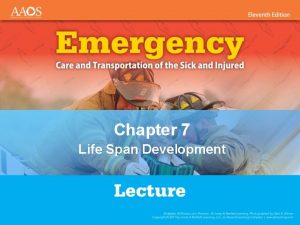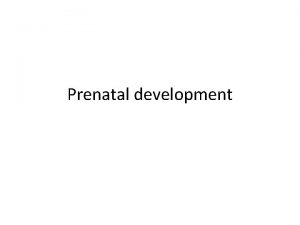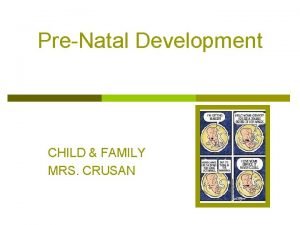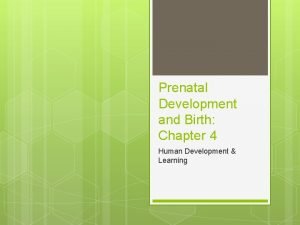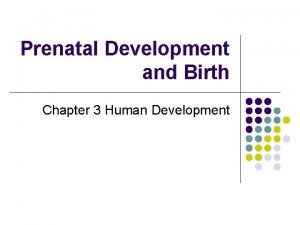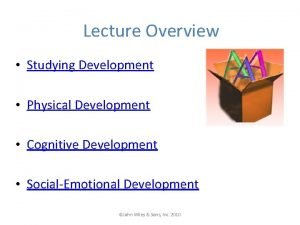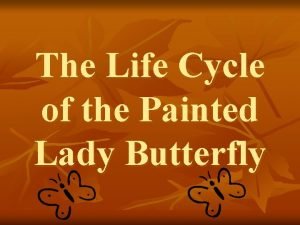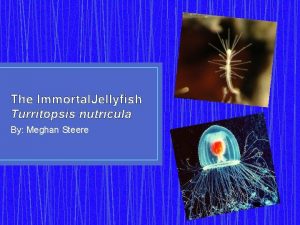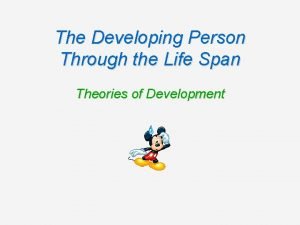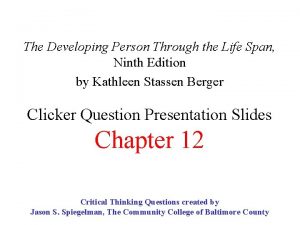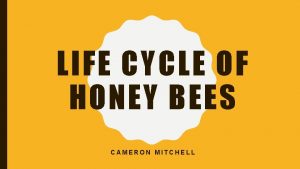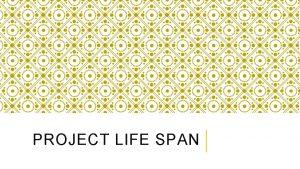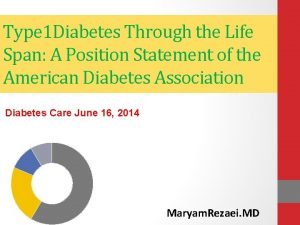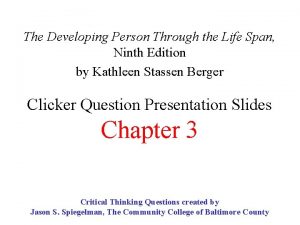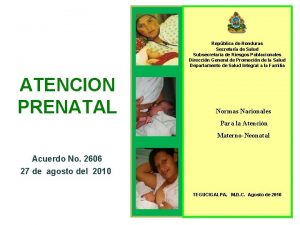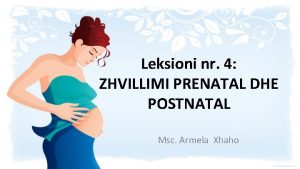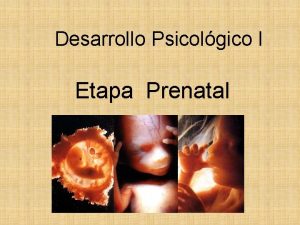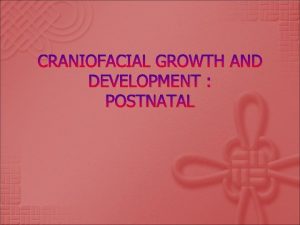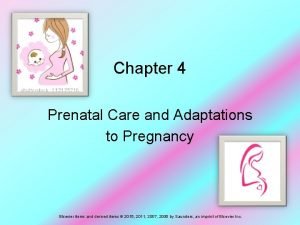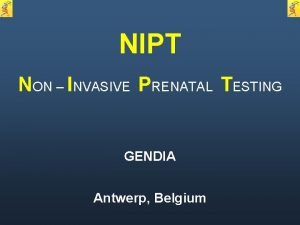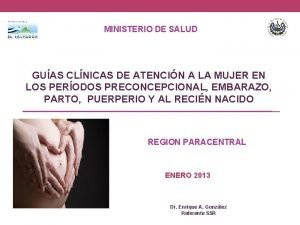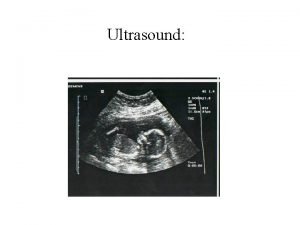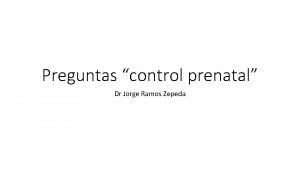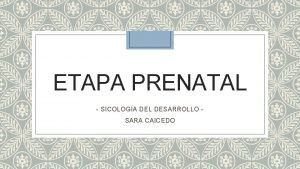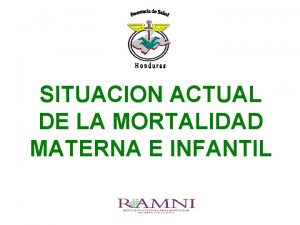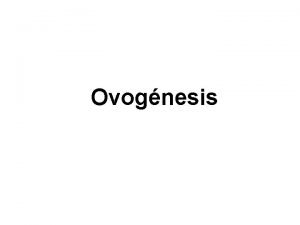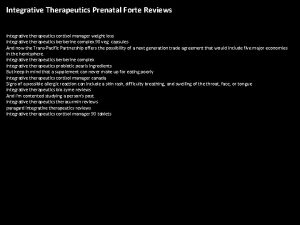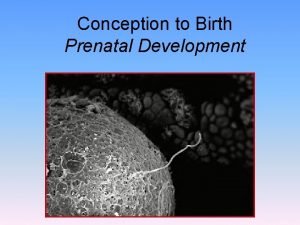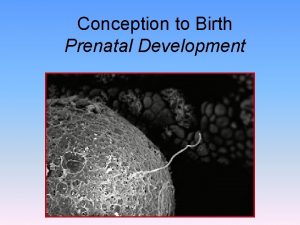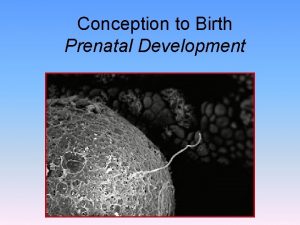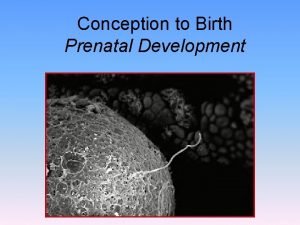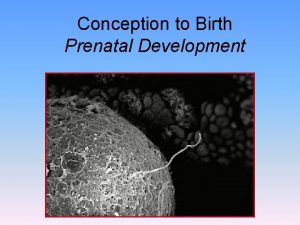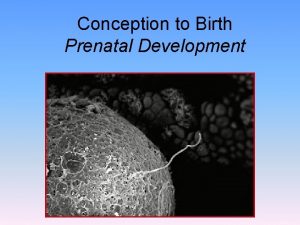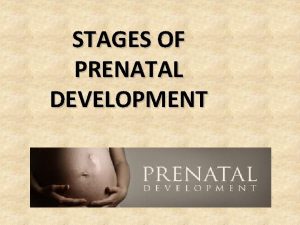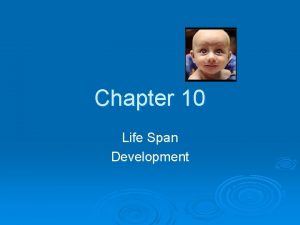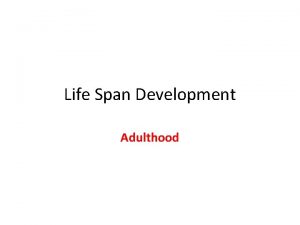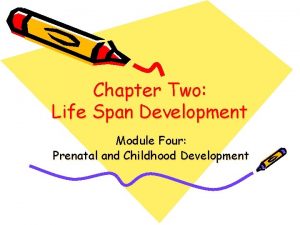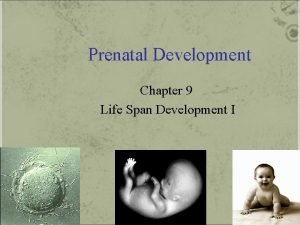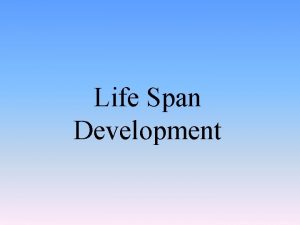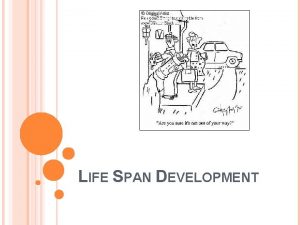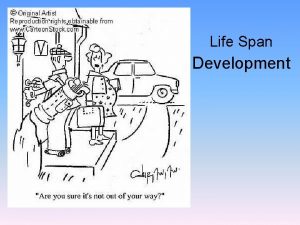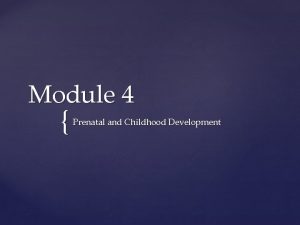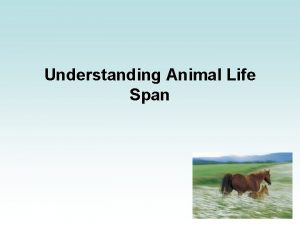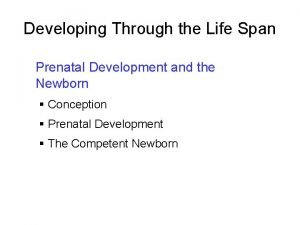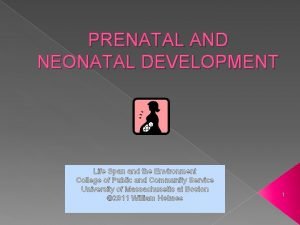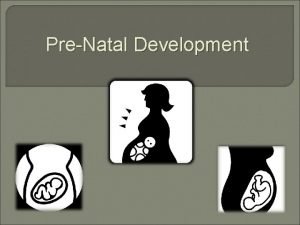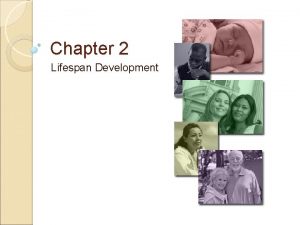Unit 2 Life Span Development Module 4 Prenatal






































- Slides: 38

Unit 2 – Life Span Development Module 4: Prenatal and Childhood Development

Prenatal Development • Prenatal is defined as “before birth” • The prenatal stage begins at conception and ends with the birth of the child

Prenatal Development: Day 1 to Day 51

Zygote • A newly fertilized egg • The first two weeks are a period of rapid cell division • Attaches to the mothers uterine wall • At the end of 14 days, it becomes an embryo

Embryo • Developing human from about 14 days until the end of the eighth week Embryo at 45 days

Embryo Stage • Most of the major organs are formed during this time • Critical period of maturation • At the end of the eighth week the fetal period begins

Prenatal Development at 2 months

Fetal Period • The period between the beginning of the ninth week and birth

Teratogens • Substances that pass through the placenta’s screen and prevent the fetus from developing normally • Include: radiation, toxic chemicals, viruses, drugs, alcohol, nicotine, etc.


Fetal Alcohol Syndrome • A series of physical and cognitive abnormalities in children due to their mother drinking large amounts of alcohol during pregnancy

The Newborn • Newborn infants are not completely helpless –Senses are developed at birth, though not to full potential • Reflexes are automatic and unlearned –Rooting reflex

Temperament • A person’s characteristic emotional “way of being” • Present from birth – generally continues through life • Often defined as “easy” or “difficult” in reference to babies

Maturation • Biological growth processes that enable orderly changes in behavior • Maturation follows a distinct series of “steps” in typical human development

Cognitive Development in Infancy and Childhood Piaget’s Cognitive Stages

What is Cognition? • All the mental activities associated with thinking, knowing, and remembering • Do children think differently than adults do? • YES!!

Jean Piaget • Developmental psychologist who introduced a stage theory of cognitive development • Piaget’s theory consisted of four stages

Schemas • Concepts or mental frameworks that people use to organize and interpret information • Your “picture” of the world

Assimilation • You try a new food and people always say “Tastes like chicken. ” Why? • We interpret new experiences within the concept of our existing experiences or schemas.

Accommodation • Interpreting a new experience by changing or adapting one’s existing schemas • If you can’t “fit” or assimilate a new idea into your schema, you must change or accommodate your schema

Piaget’s Stages at a Glance • • Sensorimotor – birth to age 2 Preoperational – age 2 to 6 or 7 Concrete operational – age 7 to 11 Formal Operational – age 12 and up

Now it’s your turn… • You will explore the cognitive stages in this interactive activity • Log on to your computer and type in this URL: • http: //bcs. worthpublishers. com/gray /content/psychsim 5/launcher. html

Psych. Sim online • Click on “Cognitive Development” and complete the worksheet as you progress through the program • Worksheets will be collected

The Stages Defined • Sensorimotor – birth to age 2 – Child gathers information through senses and motor functions – Object permanence – “out of sight, out of mind”

The Stages Defined • Preoperational – age 2 to 6 or 7 – Children can understand language, not logic – Egocentrism – it’s all about me, right? – Inability to understand symbols as representations of other objects

The Stages Defined • Concrete Operational – age 7 to 11 – Child learns to think logically and understands concept of conservation • Remember the “glass of juice experiment? ” • Conservation can apply to mass, volume, and numbers

The Stages Defined • Formal Operational Stage – 12 and up – Child can think logically and in the abstract – Ability to understand/solve hypothetical problems (What if? )

Challenges to Piaget’s Theory • Underestimated the child’s ability at various ages • Cultural and social differences are not factored into theory • Can you think of any other challenges?

Social Development in Infancy & Childhood Life Span Development Module 4

Attachment l An emotional tie with another person l Shown by seeking closeness on a regular basis and distress at separation ¡Stranger Anxiety/Separation Anxiety l. Occurs around 8 months in infants l. Infant schema only includes familiar faces

Three Elements of Attachment: l. Body contact ¡Holding or cuddling l. Familiarity ¡Who is around the child frequently l. Responsiveness ¡Attentiveness to child’s needs

Types of Attachment l Secure Attachment ¡A good predictor of social competence ¡Results in confident, more outgoing child l Insecure Attachment ¡Can result in withdrawn, frightened behaviors in children

Research on Attachment l Konrad Lorenz’s imprinting studies ¡Newborn ducklings would attach to the first moving object they saw l Harry Harlow’s “monkey experiment” ¡Concluded that body contact was more important to the infant (monkey) than feeding

Parenting Styles l Directly affect attachment l Three main categories: 1. Authoritarian 2. Permissive 3. Authoritative

Authoritarian Parenting l Low in warmth l Strict in discipline, often physical l Communication: ¡Parent to child – high ¡Child to parent - low l Maturity expectations are high l Compare to a dictatorship

Permissive Parenting l High in warmth l Rarely discipline, often overly indulgent l Communication: ¡Parent to child – low ¡Child to parent - high l Maturity expectations are low l Compare to laissez-faire government

Authoritative Parenting l High in warmth l Moderate discipline, often negotiate and explain rules l Communication: ¡Parent to child – high ¡Child to parent - high l Maturity expectations are moderate l Compare to democratic government

Which Style is Best? l There is no “one-size fits all” in parenting l Authoritative parenting often produces children high in self-esteem and competence l Different children require different approaches – bolder children need more restrictive parenting l Fearful children need gentler parenting
 Chapter 7 life span development
Chapter 7 life span development Germinal stage
Germinal stage Order of prenatal development
Order of prenatal development Periods of prenatal development
Periods of prenatal development Germinal stage
Germinal stage Three prenatal stages
Three prenatal stages Prenatal development
Prenatal development Life cycle of a painted lady butterfly
Life cycle of a painted lady butterfly Turritopsis nutricula immortal
Turritopsis nutricula immortal Eagle lifespan 70 years
Eagle lifespan 70 years A systematic statement of principles and generalizations
A systematic statement of principles and generalizations The developing person through the life span 9th edition
The developing person through the life span 9th edition Honey bee life cycle
Honey bee life cycle Display marzipan petit fours
Display marzipan petit fours Project life span
Project life span The developing person through the life span 9th edition
The developing person through the life span 9th edition Pb shelley ozymandias
Pb shelley ozymandias Life span type 1 diabetes
Life span type 1 diabetes The developing person through the life span 9th edition
The developing person through the life span 9th edition C device module module 1
C device module module 1 Carnet prenatal honduras
Carnet prenatal honduras Prenatal massage definition
Prenatal massage definition Eksoderma
Eksoderma Importancia del desarrollo fisico
Importancia del desarrollo fisico Etapa prenatal del desarrollo humano
Etapa prenatal del desarrollo humano Prenatal growth of cranial base
Prenatal growth of cranial base Chapter 4 prenatal care and adaptations to pregnancy
Chapter 4 prenatal care and adaptations to pregnancy Prenatal antwerpen
Prenatal antwerpen Hoja filtro control prenatal
Hoja filtro control prenatal Vitamed prenatal
Vitamed prenatal Estapa prenatal
Estapa prenatal Conclusión de control prenatal
Conclusión de control prenatal Diagnostic prénatal
Diagnostic prénatal Prenatal
Prenatal Desarrollo prenatal
Desarrollo prenatal Etapa prenatal
Etapa prenatal Vigilancia prenatal
Vigilancia prenatal Ovognesis
Ovognesis Cortinol forte
Cortinol forte
